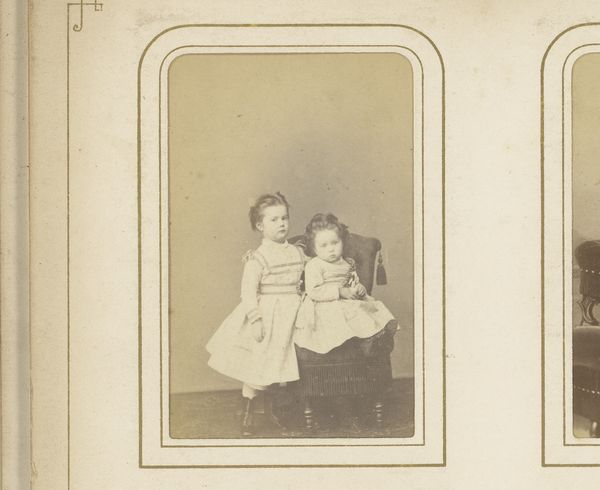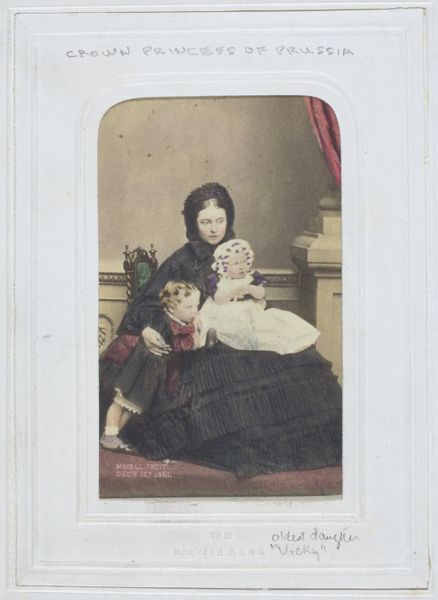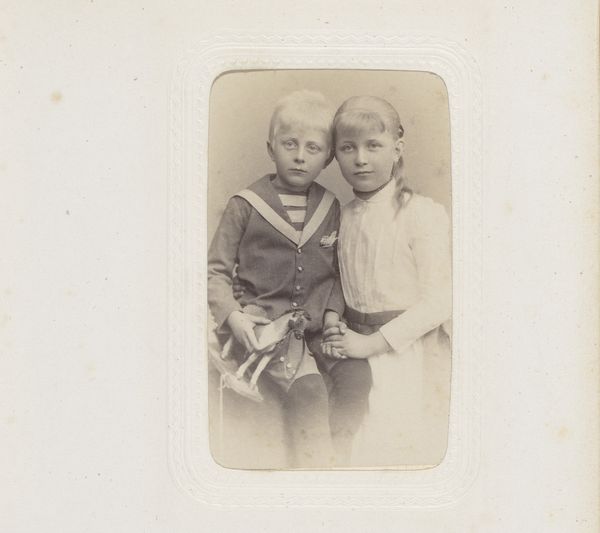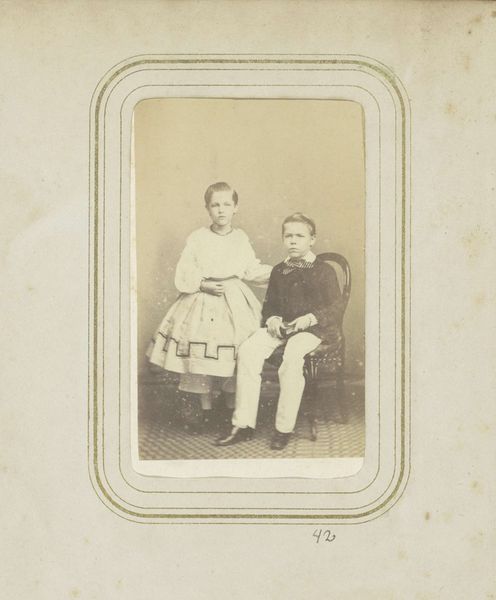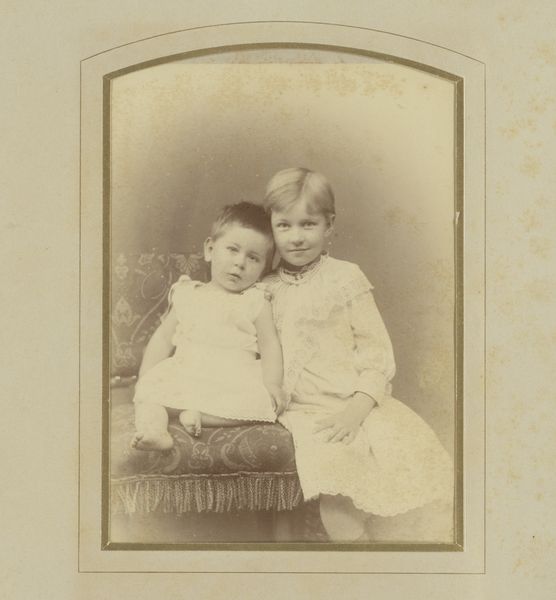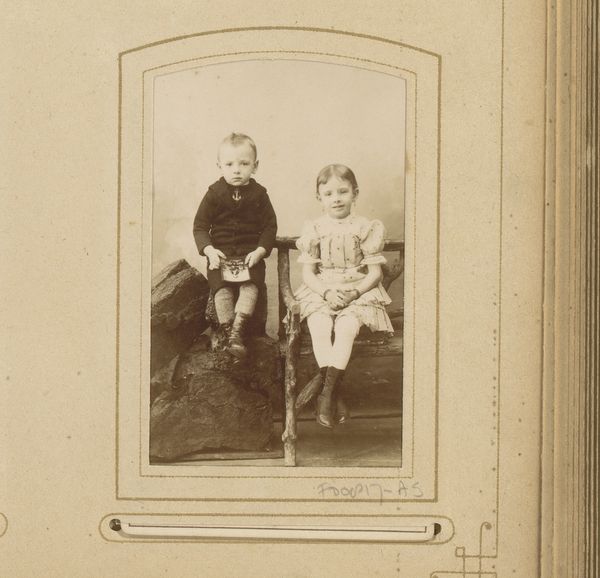
photography
#
portrait
#
photography
#
historical photography
#
child
Dimensions: height 84 mm, width 52 mm
Copyright: Rijks Museum: Open Domain
Editor: Here we have "Portret van twee kinderen"–that's "Portrait of Two Children"–a historical photograph taken sometime between 1857 and 1895 by Johannes Hinderikus Egenberger. The tonal range is narrow, almost monochromatic, which makes the composition feel very flat. What catches your eye in this piece? Curator: Structurally, observe the deliberate, almost symmetrical arrangement of the two figures. They are centered within the frame, one seated, one standing, establishing a visual equilibrium. Notice how the textures and patterns of their garments—the lines, the checkered skirts, the lace trim—contribute to the image's overall visual complexity despite its limited tonal palette. It is a fascinating juxtaposition, don't you think? Editor: Yes, definitely. It's interesting how the patterns almost compete with each other. Do you think the limited tonal range affects the interpretation of the children's expressions? Curator: Precisely. The almost uniformly flat lighting, or lack thereof, deprives us of dramatic shadows and highlights. Instead we are encouraged to decipher expression via more subtle means such as how one of the subject's outfits obscures any clear representation of form. Editor: That makes me think about how the photographer perhaps de-emphasized any visual hierarchy between the subjects, drawing emphasis to them instead as design elements in this scene, more than as human subjects. Curator: An excellent observation. The photographic process at the time also adds another dimension, creating a lens in time of how we relate with material and methods. Editor: This conversation gave me some fascinating visual frameworks.
Comments
No comments
Be the first to comment and join the conversation on the ultimate creative platform.

